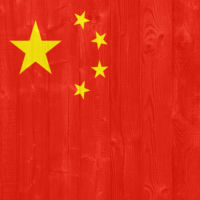Bridging the Gap Between Chinese Brands & Western Resellers
by Hugh Williams on 3rd Aug 2018 in News


China is synonymous with technology, as leading Chinese brands remain at the forefront of innovation within the space. In the past, the perception of exported Chinese technology has been that of mass-produced, low-quality novelty items, from musical key rings to flashing dog collars. Here, David Feakins, CEO & founder, Modus Brands, explains that whilst many of these products are still shipped by the container load to e-commerce retailers, high-street stores and wholesalers, there has been a significant shift in the attitude towards Chinese brands, with the likes of consumer brands, Huawei, DJI, and Xiaomi establishing their mark on the industry.
The Chinese market has had a long-standing role within global tech. However, this largely remained as a supplier of tech components and hardware for consumer tech devices. Nowadays, China is increasingly bringing its own consumer brands to market, which are winning their space. For example, a third of companies attending this year’s Consumer Electronics Show (CES) were made up of Chinese brands.
The exponential growth of these technology brands is largely fuelled by China’s own domestic market which, with a population of over 1.3 billion people, is larger than Europe and North America combined. Yet, the increasing popularity of China’s tech brands goes beyond its own borders, as the country has become the largest technology exporters in Asia.
Competing with Western Superbrands
Mobile technology is a key area where China continues to invest and develop as it looks to move away from simply being a supplier of handsets and components. The market has increasingly been looking towards becoming a major player within mobile and not only provide handsets for the western market, but compete with its superbrands.

David Feakins, CEO & Founder, Modus Brands
On the hardware front, China has demonstrated the ability to go head-to-head with western giants, such as the iPhone, with brands like Huawei and Xiaomi each producing handsets that can compete with Apple’s mobile device. Similarly, the country is establishing itself to be a major player in terms of software and innovation. Due to their flexibility and interactive features, apps such as Alipay and WeChat have already shown they can challenge the likes of Facebook Messenger, WhatsApp, and PayPal.
Climbing the Great Wall
China’s innovation is not only driven by the country’s willingness to invest in the development of its technology, but also by Chinese consumers who have a growing appetite for newer products. These driving forces show no signs in slowing down and are instead leaving the rest of the world, not only struggling to keep up, but also looking to Chinese brands as game-changers.
The continued success of Chinese tech means that there are an abundance of opportunities that retailers and resellers can take advantage of. However, it is at this point where resellers and manufacturers hit a wall.
There is a clear interest in Chinese brands from western consumers. For example, manufacturer Huawei saw European sales of its smartphones jump by 38% and firmly place itself as the third biggest manufacturer in terms of units sold.
Yet, whilst brands such as Huawei and Xiaomi have penetrated western markets, not all Chinese brands have had the same success. Many manufacturers lack the experience or expertise to create a sales strategy that is going to be effective in Western countries. Often this means that Western resellers don’t even know if the company in China and their products exist and, conversely, the manufacturer has no route to market. Therefore, what might have been a mutually beneficial business opportunity is lost.
Bridging East & West
Whilst there is significant opportunity for Chinese brands to establish themselves within the western market, there is also a prominent challenge of finding a route to market. Of course both markets have a number of vast differences and therein lies one of the most difficult hurdles to overcome.
In an attempt to overcome this barrier, many ambitious Chinese brands will simply employ the help of Western resellers with specific expertise and knowledge within that market. However, whilst they may have unparalleled experience in the West, these resellers may have limited or non-existent experience of the market in which the products originate.
Instead, brands need to be looking towards those that have experience of both and understand the challenges and opportunity that East and West markets present. Having direct experience of working with Chinese brands will ultimately enable Western resellers a clear advantage. Not only can they pinpoint what innovative products are in the pipeline, but they can gauge what products sell well amongst Eastern consumers and which brands have the highest standards in terms of quality and service.
China has become a global superpower within the tech space, with its products already challenging established brands across the world. Even if some Chinese brands aren’t household names yet, there is the potential for them to be, as the demand for the innovative technology products that Chinese companies are producing is certain to increase exponentially.
As these brands continue to emerge, there is a notable opportunity for them to penetrate the Western world. In addition, there is scope for Western resellers to take advantage of these innovative technologies to bring something unique to consumers before their competitors.
However, in order for Chinese brands and resellers to work in harmony, there needs to be a clear understanding of each market from both parties. Not only do Eastern brands need to understand consumer habits of those within the West, but resellers need to have insight on the technologies coming from China and how these emerging brands could soon become household names.




Follow Fast Growth Brands